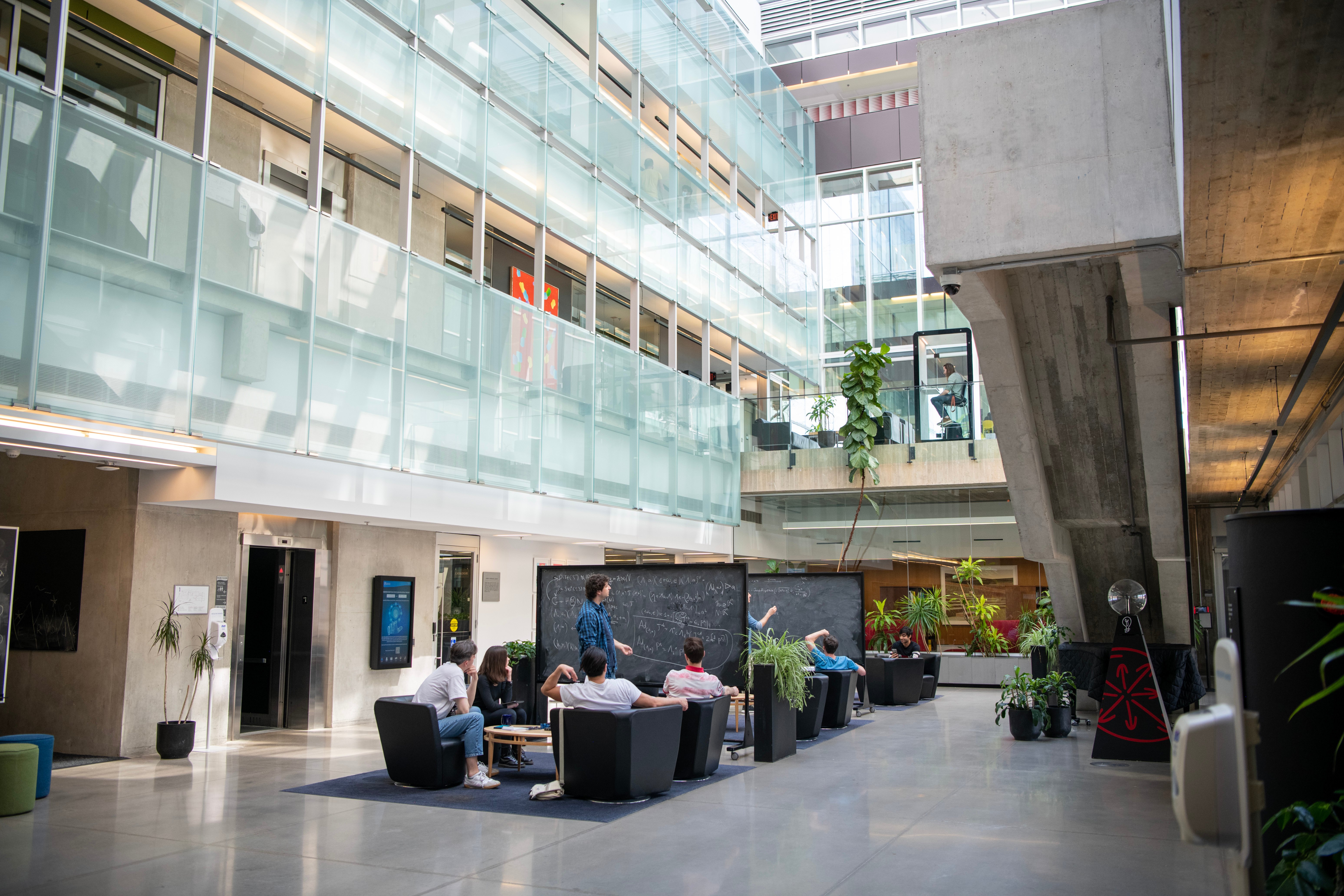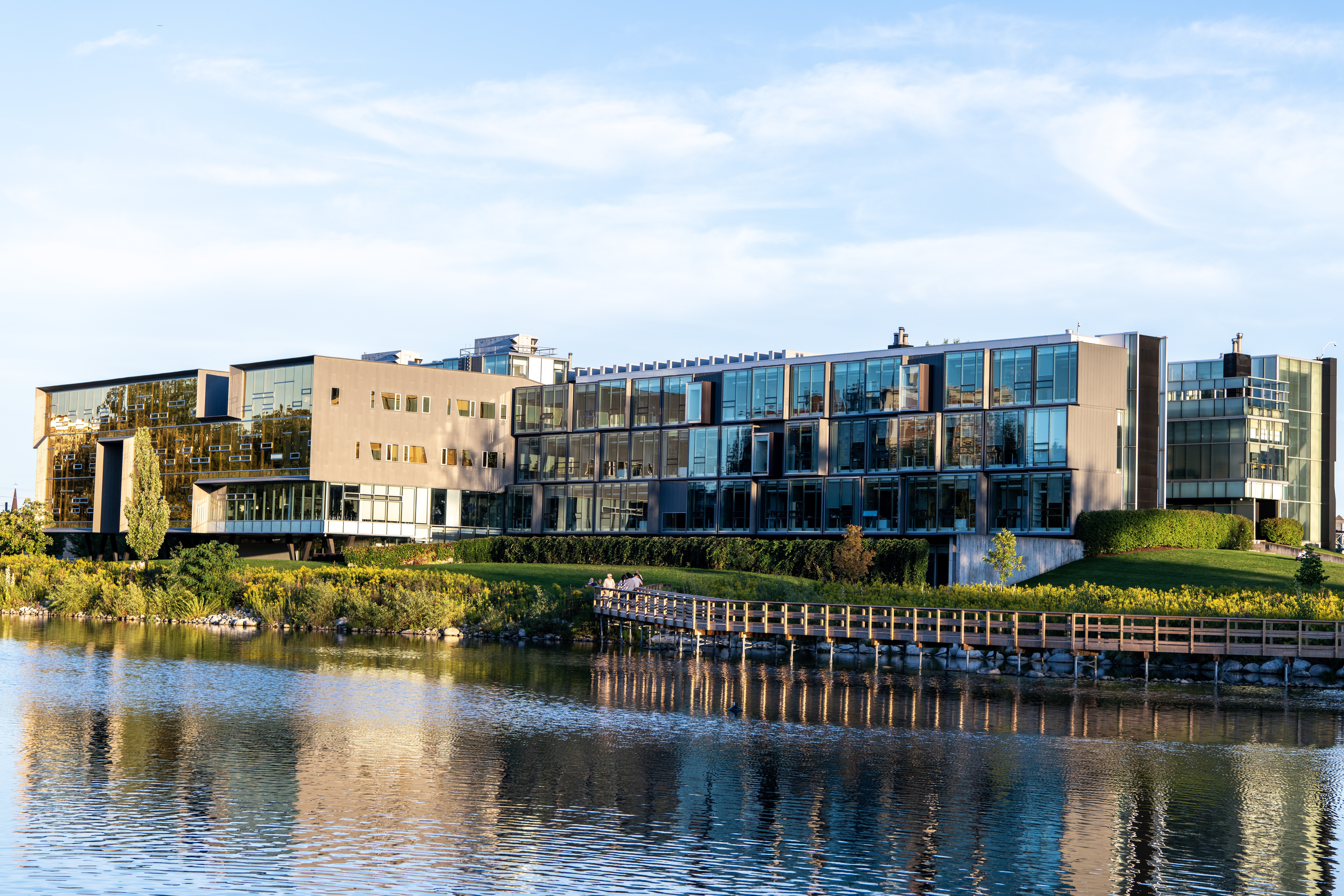Even an award-winning building as cool as Perimeter Institute is on a journey of continuous improvement. In 2006, a smaller version of the facility won the national Governor General’s Medal for Architecture. In 2015, an expansion to the building, named the Stephen Hawking Centre at Perimeter Institute, attained Leadership in Energy and Environmental Design (LEED) Silver certification for environmental sustainability. And when it comes to greening the building, Perimeter is not done yet.
In 2024, the Institute completed phase one of a three-phase decarbonization plan. By the time the plan is fully implemented in 2027, Perimeter will have reduced the carbon footprint for its building by 87 percent.
The decarbonization project on Perimeter’s campus represents a pivotal step toward sustainability, achieving a reduction in our carbon footprint through innovative technologies and strategic operational shifts as they relate to the building.
“In 2024, our biggest action involved tackling the heating system by replacing our aging boilers with high-condensing ones that are more efficient,” says Brian Lasher, associate director of facilities. “Even though the new boilers use gas, this will be a significant reduction in our energy consumption for heating the building.”
Lasher notes the new boilers are the only gas equipment to be installed, and they run four percent of the year. Eventually, once other phases of the plan are complete, and the new boilers reach the end of their lifespan, they will be replaced with electric options. At that time, Perimeter’s building will be completely carbon-free.
As a next step, Lasher will oversee the process of installing high efficiency humidifiers and air source heat pumps. Phase three will see the installation of a completely new electrical supply, including replacing the transformer at the building’s entrance.
“We’re doing a lot of back-of-house stuff, like infrastructure, in the next year. The following year we’ll see more changes with equipment being put on the roof and changing our cooling system,” says Lasher.
In addition to tackling the heating system, Lasher’s team has also begun replacing corridor lighting with LED, a move that is expected to reduce Perimeter’s energy cost for lighting by 50 percent. He notes work on lighting will continue into next year.
“We’re committed to these efficiencies and to environmental stewardship,” says Lasher. “It’s the right thing to do, and we’re well on our way.”
À propos de l’IP
L'Institut Périmètre est le plus grand centre de recherche en physique théorique au monde. Fondé en 1999, cet institut indépendant vise à favoriser les percées dans la compréhension fondamentale de notre univers, des plus infimes particules au cosmos tout entier. Les recherches effectuées à l’Institut Périmètre reposent sur l'idée que la science fondamentale fait progresser le savoir humain et catalyse l'innovation, et que la physique théorique d'aujourd'hui est la technologie de demain. Situé dans la région de Waterloo, cet établissement sans but lucratif met de l'avant un partenariat public-privé unique en son genre avec entre autres les gouvernements de l'Ontario et du Canada. Il facilite la recherche de pointe, forme la prochaine génération de pionniers de la science et communique le pouvoir de la physique grâce à des programmes primés d'éducation et de vulgarisation.


